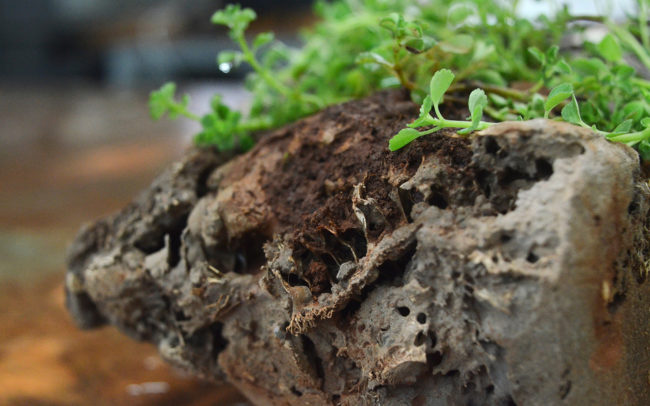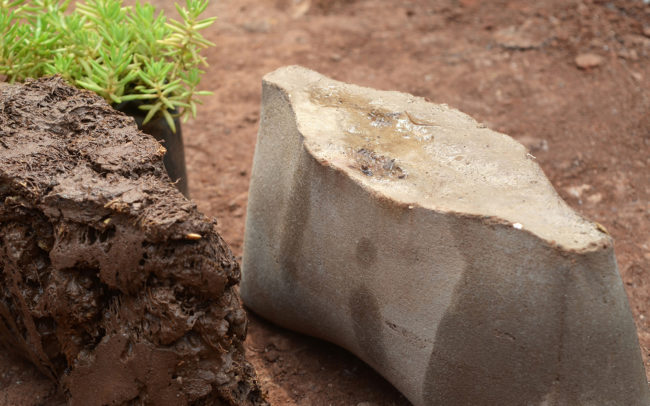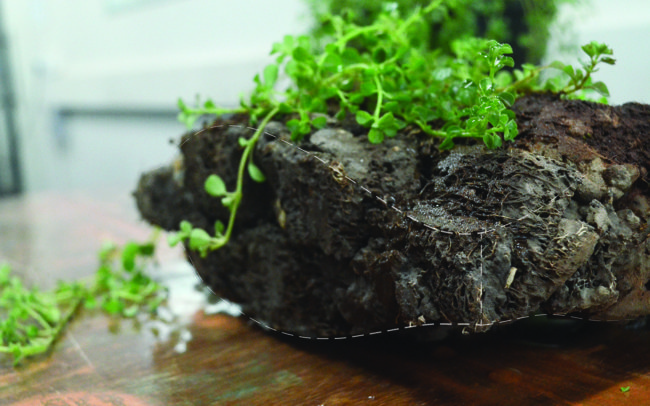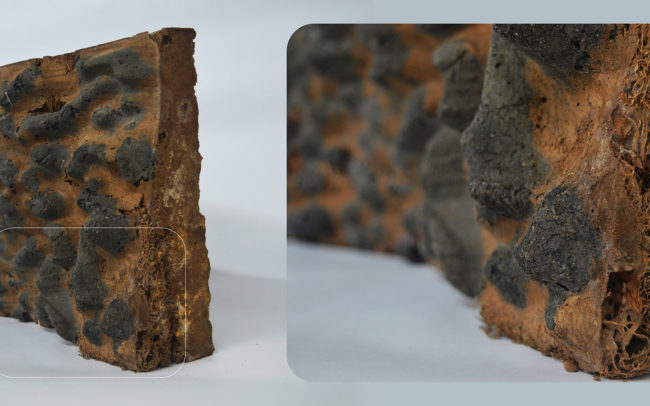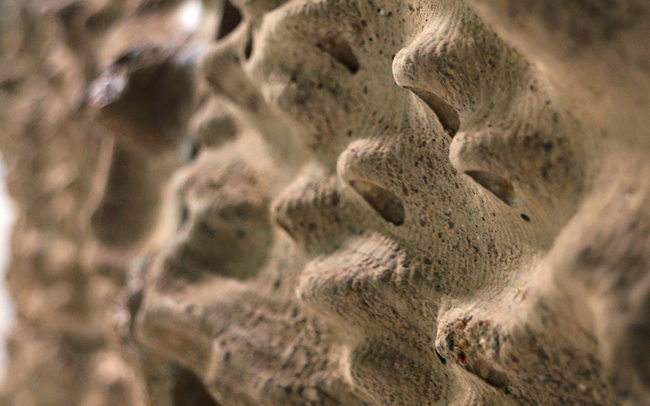a biodegradable construction material for the growth of living ecosystems in built environments
About 8 to 15 percent of the world’s carbon dioxide emissions are attributed to concrete manufacturing, which is widely used in construction. The building industry hence continues to be one of the largest contributors to global warming and climate change. In addition, concrete from demolished buildings, adds to the particulate pollution and is dumped into landfills as the industry lacks an efficient formal system of recycling, especially in India.
The Green Charcoal is a practice-based research at the intersection of material innovation and technology that addresses the issue of rising pollution and temperature by developing healthy materials for building construction. It is the development of cutting-edge materials for construction made up of charcoal, organic luffa fibres, soil and air to create a built system that is biodegradable, lightweight and allows the growth of living ecosystems of plants and insects on its surface. This is aimed at creating a breathing state of architecture to ensure increased biodiversity in cities while providing healthy urban solutions for people.
Left: Process prototype – Exploration of different percentage of charcoal and concrete to test adsorption, porosity and strength of the mix. Right: Process Prototype – Pervious Luffa Concrete Brick that is 4.81 times lighter and upto 20 times more porous than conventional pervious concrete brick.
In biophilic spaces, people are happier, patients recover faster, students learn better, retail sales are higher, workplace productivity goes up, and absenteeism goes down. If the facades of buildings, compound walls and dividers that follow the road network are built using the green charcoal bricks, they will not only clean the air or control rise in temperature but will also inspire a positive social behaviour.
Left: The Green Charcoal biodegradabe brick with luffa reinforcements (L) and without luffa reinforcements (R). Middle: Performative soilcrete brick – Plants taking roots and growing in the Green Charcol biodegradable brick 1. Right: Performative soilcrete brick – Plants taking roots and growing in the Green Charcol biodegradable brick 2.
World of a better climate – The green charcoal bio-brick allows biodiversity of plant and insect species, passive cooling of the interior environment and purifies the air.
World of a better economy – The aggregate used in the constitution is sourced from see beds and is getting increasingly scarce and expensive. The green Charcoal material composite has a 90% reduction in the use of coarse aggregate, 4% reduction in cement, 4% reduction in fine aggregate, 21% increase in air pockets. Effectively it has a 54% increase in organic matter as compared to a standard concrete block.
Left: Testing surface undulations on the bricks to provide micro light-shadow conditions for small plants and better anchorage for the roots. Middle left: Modular selfshading soilcrete brick made using The Green Charcoal Mix. Middle right: Modular selfshading soilcrete brick made using The Green Charcoal Mix – Texture. Right: Cradle to Cradle materials – Seeds germinating into seedlings in the Green Charoal mix representing cycle of rebirth.
The green charcoal brick replaces metal reinforcements found in standard RCC with Luffa’s fibrous network, which provides strength, appropriate flexibility and ensures a high porosity. These luffa pores provide anchorage for plants and act as thousands of tiny water tanks reducing the temperature of the brick thereby cooling the interior environments. One of the component of the biodegradable brick mixture – charcoal being an adsorbent of nitrates, is used in small portions on the surface. This creates a co-dependent system where the charcoal adsorbs impurities from the air that serves as nutrition for the plants to feed on.
Different surface treatments have been explored with the design of bricks using the bio-mixture. These organic undulating surfaces are aimed to facilitate better anchorage for plant roots and also to guide them to grow in a certain fashion. This gives people a sense of material connection with nature which is comforting and a visual connection with natural patterns that are stimulating. By changing the variables and ratios of the material composition, the green charcoal mixture has the potential of opening up diverse applications in the built environments. This material could be developed for road curbs and divider, plastering and cladding materials or could be realised into performative construction bricks for low structural strength like compound walls to moderate strength filler walls. The Green Charcoal research continues to explore biophilic material compositions, climatic performance, natural colour palettes and patterns to make the future cities a healthier place to live in.

Above: Development of the brick prototype




